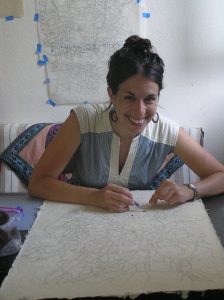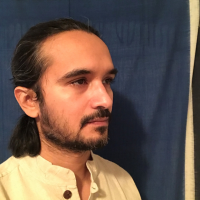CAA News Today
CAA 2021: A look back on the past year’s programming, publications, and opportunities
posted by CAA — November 30, 2021
CAA has produced this reel with a compilation of events, scholarship, programs, and initiatives CAA from the last year. See below for a full list of each item (in order of appearance in the video) with links to learn more.
Programming:
CAA’s first virtual Annual Conference
Mariam Ghani in conversation with Laura Anderson Barbata
In Conversation with Dr. Nancy Odegaard
Theresa Avila, Annual Conference Program Chair in conversation with Meme Omogbai
An Inaugural Evening with CAA Distinguished Awardees and Artists
CAA Then & Now: Reflections on the Centennial Book and the Next Century
Karen Leader, author of Chapter 12: Advocacy
Opportunities:
Publication, travel, and support grants
Publications and Publications Programming:
Artist Project, Elana Mann for Art Journal Open
Roundtable discussion for Art Journal Open, Holding Space…
Art Journal and The Art Bulletin
caa.reviews book and exhibition reviews
caa.reviews’s dissertation roster, 2020
Global Programs
CAA-Getty International Program
CAA-Getty 10-Year International Program online publication
Podcasts
CAA Conversations by CAA’s Education Committee
CAA’s 110th Annual Conference will take place in Chicago from February 17-19, followed by virtual live sessions to be held in Zoom from March 3-5. For more information and to register go to this link.
2018 Professional Development Fellowships for Graduate Students Now Open
posted by CAA — August 01, 2018
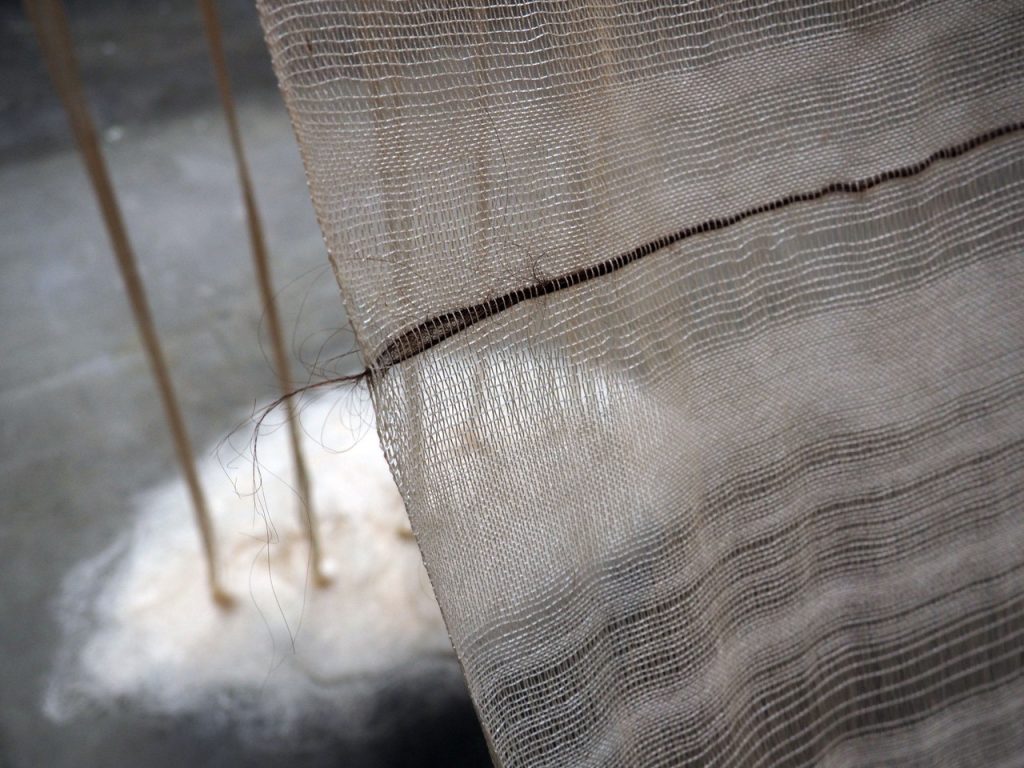
Brenna K. Murphy, Grief Work (Shroud). Detail. Cotton yarn and artist’s hair, 100 ft x 40 in. 2017 Professional Development Fellow in Visual Art.
The Professional Development Fellowships program supports promising artists, designers, craftspersons, historians, curators, and critics who are enrolled in MFA, PhD, and other terminal degree programs. Fellows are honored with $10,000 unrestricted grants to help them with various aspects of their work.
One award will be presented to a practitioner—an artist, designer, and/or craftsperson—and one award will be presented to an art, architecture, and/or design historian, curator, or critic. Fellows also receive a free, one-year CAA membership and complimentary registration to the Annual Conference. Honorable mentions, given at the discretion of the jury, also earn a free one-year CAA membership and complimentary conference registration.
CAA initiated its fellowship program in 1993 to help student artists and art historians bridge the gap between their graduate studies and professional careers. Past recipients include artists and thinkers such as Marin Sarve-Tarr (2015), Maggie Cao (2014), La Toya Ruby Frasier (2006), Risë Wilson (2002), Chitra Ganesh (2001), Miguel Luciano (2000), Miwon Kwon (1996), and Blake Stimson (1995), among many others.
ARE YOU ELIGIBLE?
CAA seeks applications from students who are current members; will receive their MFA or PhD degree in the calendar year 2019, following the year of application (2018 for the current fellowship cycle); and have outstanding capabilities and demonstrate distinction in their contribution to art history and the visual arts.
A jury of artists, curators, and other professionals will review all applications in fall 2018 and announce the recipients in January 2019.
HOW TO APPLY
DEADLINES
PhD Fellowship: October 1, 2018
MFA Fellowship: November 16, 2018
CONTACT
For more information about the CAA fellowship program, please contact Aakash Suchak, grants and special programs manager, at asuchak@collegeart.org.
Recipients of the 2017 Professional Development Fellowships
posted by CAA — January 29, 2018
CAA has awarded two 2017 Professional Development Fellowships—one in art history and one in visual art—to graduate students in MFA and PhD programs across the United States. In addition, CAA has named one honorable mention in art history and one in visual art. The fellows and honorable mentions both receive a complimentary one-year CAA membership and free registration for the 2018 Annual Conference in Los Angeles.
The recipient of the $10,000 fellowship in art history is Sooran Choi, a PhD candidate in Art History at CUNY Graduate Center. Accepting the $10,000 fellowship in visual art is Brenna K. Murphy, a MFA candidate in Studio Art at the University of Michigan Stamps School of Art & Design.
The honorable mention for art history goes to Murad Khan Mumtaz, a PhD candidate in the Department of Art and Architectural History at the University of Virginia. The recipient of an honorable mention in visual art is Courtney N. Ryan, a MFA candidate in Ceramics and Sculpture at Georgia Southern University.
Suzanne Preston Blier, president of the CAA Board of Directors, will formally recognize the two fellows and two honorable mentions at the 106th Annual Conference during Convocation, taking place on Wednesday, February 21, 2018, at the Los Angeles Convention Center.
CAA’s fellowship program supports promising artists and art historians who are enrolled in MFA and PhD programs nationwide. Awards are intended to help them with various aspects of their work, whether for job-search expenses or purchasing materials for the studio. CAA believes a grant of this kind, without contingencies, can best facilitate the transition between graduate studies and professional careers. The program is open to all eligible graduate students in the visual arts and art history. Applications for the 2019 fellowship cycle will open in the late spring.
FELLOW IN ART HISTORY
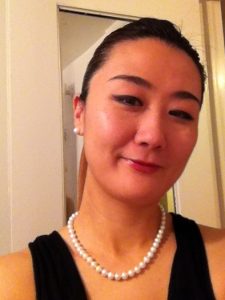 Sooran Choi
Sooran Choi
Sooran Choi will complete her PhD in Art History at The Graduate Center, City University of New York, in summer 2018. Her dissertation The South Korean “Avant-Garde,” 1967-1992: Subterfuge as Radical Agency concerns the South Korean avant-garde under Cold War military dictatorships from 1967 to 1992, and focuses on the social and political tension between the military dictatorships and the opposition of political dissidents comprised mostly of artists, students, and intellectuals, who defined themselves as “avant-garde artists.” By examining various forms of performative and conceptual art along with the recontextualized rhetoric of the avant-garde in South Korea, Choi argues South Korean artists appropriated and repurposed various Euro-American post-WWII avant-garde practices such as Fluxus, Happenings, Conceptualism, and Environmental art to mask their social and political critique to evade censorship and torture by the military juntas. A re-purposed avant-garde as covert political agency, Choi contends, proved useful for the South Korean artists to further their own social and political ends, and requires a renewed and nuanced interpretation of non-Western art historical trajectories beyond the binary of center/periphery model, and expands the existing discourse on the avant-garde.
Choi has received a Center for Place, Culture and Politics Dissertation Fellowship, and research grants from The Academy of Korean Studies, and the City University of New York. Choi’s scholarly interest in diverse art historical trajectories has carried over into her teaching as an Adjunct Lecturer at the City University of New York and the Fashion Institute of Technology (SUNY) where she teaches art history. Her past writing included topics such as East Asian artists in diaspora, alternative art spaces in South Korea, Gwangju Biennials, the Korean War Memorial in Battery Park (NYC), Japanese students at the Bauhaus, and the eroticism of Japanese Shunga art.
FELLOW IN VISUAL ART
Brenna K. Murphy
Brenna K. Murphy explores the experience of loss and its relationship to the body using fiber-based techniques such as weaving, embroidery, and lace-making. She holds a B.F.A. from the University of North Carolina – Chapel Hill where she graduated with Highest Honors and was the recipient of the Alexander Julian Prize, an award for the Department of Art’s “best students making work with a high standard of design,” and is currently pursuing an M.F.A. from the University of Michigan Stamps School of Art & Design.
A working artist for many years, Brenna has exhibited widely throughout the U.S. and internationally in China, Nepal, and France in community art centers, commercial galleries, and corporate venues. Her work has also been featured in exhibitions at museums and universities such as the Hunter Museum of American Art in Tennessee, the Patan Museum in Kathmandu, the University of Pennsylvania, Moore College of Art & Design, and the Tyler School of Art at Temple University. She has taught courses, led workshops, and given lectures at venues such as the Kathmandu University Center for Art & Design, the Nepal Art Council, and the Tyler School of Art, and her work has been collected by the Henry-Copeland Permanent Art Collection at the University of North Carolina and the prestigious West Collection. She is the recipient of many awards, including a competitive two-year fellowship from the Center for Emerging Visual Artists and the Fleisher Art Memorial Wind Challenge Award in Philadelphia, and has attended several artist residencies, such as the Santa Fe Arts Institute in New Mexico, the Kathmandu Contemporary Arts Centre in Nepal, and the CAMAC Centre d’Art and Cité Internationale des Arts in France.
HONORABLE MENTIONS IN ART HISTORY AND VISUAL ART
Murad Khan Mumtaz
Murad Khan Mumtaz is a Pakistani-American scholar who examines historical intersections of art, literature and religious expression in South Asia. His primary research focuses on devotional portraiture with a special interest in representations of Muslim saints in early modern India. He is also an artist trained in the traditional practices of North Indian painting, which he exhibits, researches and teaches internationally.
A native of Lahore, Mumtaz was educated at Pakistan’s National College of Arts, where he first studied Indian painting under the guidance of Ustad Bashir Ahmed. He later completed an MFA in visual art as a Fulbright Scholar at Columbia University. He is currently a doctoral candidate in the Department of Art and Architectural History at the University of Virginia and is working toward the completion of his dissertation, “Objects of Devotion: Representations of Muslim Saints in Early Modern South Asian Painting,” which he expects to defend in April 2018.
Mumtaz has been awarded fellowships from the American Institute of Indian Studies, the American Institute of Pakistan Studies and the CLIR-Mellon Program for dissertation research in original sources. As a Theodore Rousseau Fellow of the Metropolitan Museum of Art he has carried out research in European museums and libraries. He was recently appointed an art history research fellow of the Freer-Sackler Galleries at the Smithsonian Institution in Washington, DC.
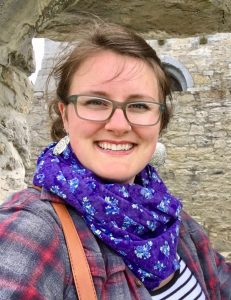 Courtney N. Ryan
Courtney N. Ryan
Receiving her Master of Fine Arts in Ceramics and Sculpture this May, Courtney Ryan is known for her intricate clay sculptures that appear to have emerged organically from their surroundings. She currently resides in Statesboro, Georgia, near Savannah, where she teaches Two-Dimensional and Three-Dimensional design courses as an Instructor of Record at Georgia Southern University. Upon graduation, Courtney intends to continue her studio practice while exhibiting work as she searches for her future career. As an aspiring professor of art, she wants to continue teaching and remain involved within the art world both professionally and academically.
Over the course of her graduate career, Courtney has had the opportunity to travel abroad to experience the Venice Biennale, as well as spend two summers in Ireland on residency through the European Council. As an avid presenter, Courtney has participated in conferences such as SECAC, SLSA, and of course CAA. Last August, she had her first solo exhibition, Domestic Consumption, at Columbus State University, and has since shown her work at other universities including the University of Georgia, Georgia State University, and Augusta University. Featured in Sculpture Magazine as an Honorable Mention for the 2017 Outstanding Student Achievement Award, Courtney continues to push her work into new realms. Currently she is exhibiting in The Delaware Contemporary Museum’s 2017 MFA Biennale: Domestic, as well as an upcoming show-swap with Aalto University in Helsinki, Finland. Having just completed a 40-foot mural and a public arts sculpture, Courtney is also heavily involved in her local community.
Deadlines are Approaching for 2017 CAA Professional-Development Fellowships
posted by CAA — August 30, 2017
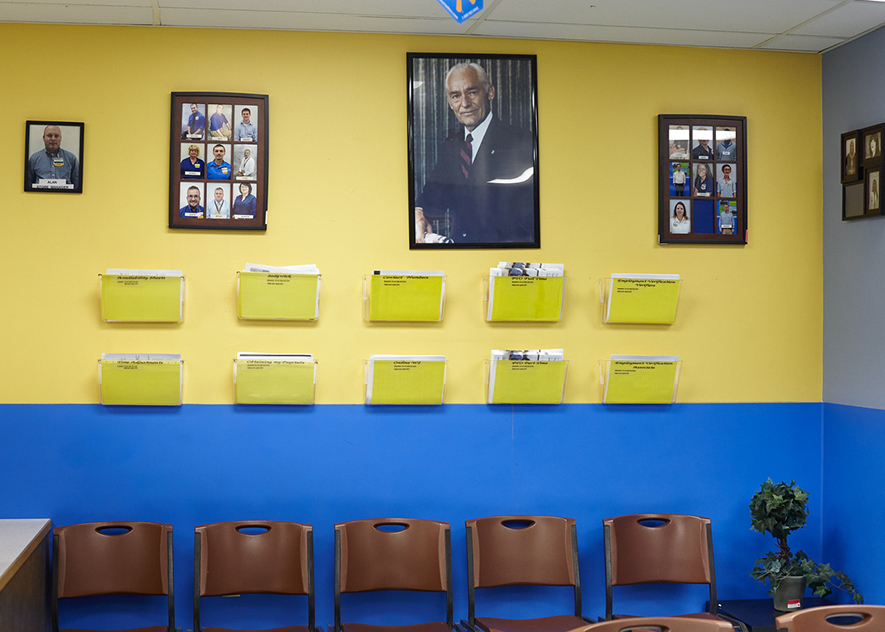
Photography by Daniel Seth Kraus, 2016 Professional-Development Fellowship Awardee
October 2 (PhD candidates) and November 10 (MFA candidates) are the deadlines for the CAA Professional-Development Fellowships. The program supports promising artists, designers, craftspeople, historians, curators, and critics who are enrolled in MFA, PhD, and other terminal-degree programs nationwide.
Fellows are honored with $10,000 grants to support their work, whether it be for job-search expenses or purchasing materials for the studio.
“I remember sitting in my graduate school studio applying for the award. I was day-dreaming about how it could help me be a self-sustaining artist and maybe start my career in teaching. A few months later I received notification of the award and I’m happy to say the grant has helped me enormously with both of my day-dreams, artistic and academic. CAA’s Professional-Development Fellowship for Visual Artists has stabilized a shaky phase of my career and life, continuing an artistic practice after graduate school. The award funds helped me to kick-start my studio space, travel for photography research, and secure teaching positions right out of graduate school. CAA’s support of developing visual artists is certainly outstanding and to an even greater extent, appreciated. I’m happy to now be a CAA member and encourage others to apply for the fellowship without hesitation.” —Daniel Kraus, 2016 Professional-Development Fellowship Recipient
One award will be presented to a practitioner—an artist, designer, and/or craftsperson—and one award will be presented to an art, architecture, and/or design historian, curator, or critic. Fellows also receive a free one-year CAA membership and complimentary registration to the 2018 Annual Conference in Los Angeles, February 21-24. Honorable mentions, given at the discretion of the jury, also earn a free one-year CAA membership and complimentary conference registration.
CAA initiated its fellowship program in 1993 to help student artists and art historians bridge the gap between their graduate studies and professional careers.
2016 Recipients of CAA’s Professional Development Fellowships
posted by Christopher Howard — January 23, 2017
CAA has awarded two 2016 Professional-Development Fellowships—one in visual art and one in art history—to graduate students in MFA and PhD programs across the United States. In addition, CAA has named one honorable mention in art history and two in visual art. The fellows and honorable mentions also receive a complimentary one-year CAA membership and free registration for the 2017 Annual Conference in New York.
Accepting the $10,000 fellowship in visual art is Daniel Seth Krauss, an MFA student in photography in the Tyler School of Art at Temple University in Philadelphia, Pennsylvania. The recipient of the $10,000 fellowship in art history is Sara Blaylock, a doctoral candidate in visual studies at the University of California, Santa Cruz.
The honorable mention for art history goes to Lex Lancaster, a PhD student at the University of Wisconsin, Madison. The two honorable mentions in visual art are Allison Rose Craver, an MFA candidate at Ohio State University in Columbus, and Andrew Jilka, an MFA student at the School of Visual Arts in New York.
Suzanne Preston Blier, president of the CAA Board of Directors, will formally recognize the two fellows and three honorable mentions at the 105th Annual Conference during Convocation, taking place on Wednesday, February 15, 2017, at the New York Hilton Midtown.
CAA’s fellowship program supports promising artists and art historians who are enrolled in MFA and PhD programs nationwide. Awards are intended to help them with various aspects of their work, whether for job-search expenses or purchasing materials for the studio. CAA believes a grant of this kind, without contingencies, can best facilitate the transition between graduate studies and professional careers. The program is open to all eligible graduate students in the visual arts and art history. Applications for the 2017 fellowship cycle will open in the late spring.
FELLOW IN VISUAL ART
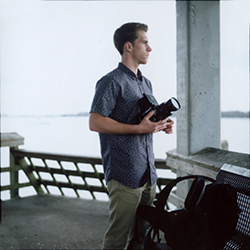 Daniel Seth Kraus
Daniel Seth Kraus
Daniel Seth Kraus‘s work blends historical research with photographic practice to deepen our understanding of people and places. Currently his research investigates faith and work in the American South. Kraus’s work has been featured in numerous print and online publications, including Fraction Magazine, SeeSaw Magazine, Oxford American, and Aint Bad Magazine. His photographs have been exhibited in national and international juried exhibitions, including one at the Morris Museum of Art in Augusta, Georgia. He earned a BFA in photography and a BA in history from the University of North Florida in Jacksonville and is pursuing a MFA in photography at the Tyler School of Art at Temple University in Philadelphia, Pennsylvania.
FELLOW IN ART HISTORY
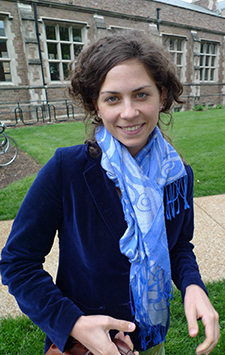 Sara Blaylock
Sara Blaylock
Sara Blaylock will complete her PhD in visual studies at the University of California, Santa Cruz, in spring 2017. To date, the bulk of her research has concerned the experimental film, art, and visual culture of the German Democratic Republic during the 1980s. Her dissertation, “Magnitudes of Dissent: Art from the East German Margins,” focuses on how photography and film, body-based practices, print media, and galleries addressed issues of representation, performativity, and collectivity. It argues that experimental practice in a 1980s GDR was not only an antidote for but also an interpretation of a weakening state—a foil and a mirror to official culture.
Blaylock’s dissertation research has been supported by the German Academic Exchange Service and the Rosa Luxemburg Foundation, as well as by numerous grants from the University of California, Santa Cruz. She has published in numerous academic forums. Most recently, an article appeared in Gradhiva, a French-language journal of art history and anthropology, and Blaylock contributed an essay in both German and English to the catalogue for the exhibition Gegenstimmen. Kunst in der DDR 1976–1989 [Voices of Dissent: Art in the GDR 1976–1989], held at the Martin-Gropius-Bau in Berlin. Another article, “Bringing the War Home to the United States and East Germany: In the Year of the Pig and Pilots in Pajamas,” will appear in Cinema Journal later this year.
Blaylock was recently invited to codirect the International Association for Visual Culture, a scholarly organization that encourages inquiry and debate within the field and that advocates the critical and theoretical expansion of visual-culture studies in academic and artistic venues. She looks forward to helping to advance and strengthen the association’s vision.
HONORABLE MENTIONS IN VISUAL ART AND ART HISTORY
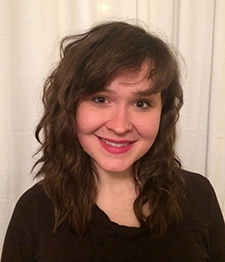 Allison Rose Craver
Allison Rose Craver
Allison Rose Craver will complete her MFA, with a concentration in ceramics, at Ohio State University in in Columbus in May 2017. Craver grew up in East Aurora, New York, and earned a BFA in 2010 from New York State College of Ceramics at Alfred University in Alfred. A year later she studied as a special student at the University of Wisconsin, Madison. Craver has shown her work nationally, including exhibitions at the Archie Bray Foundation for the Ceramic Arts in Helena, Montana, and the Arrowmont School of Arts and Crafts in Gatlinburg, Tennessee. In 2014 she was invited to demonstrate in the Process Room at the annual National Council on Education for the Ceramic Arts conference in Milwaukee. Craver’s work is process driven, using ceramics materials in conjunction with fiber and found objects to explore the nature of care and work.
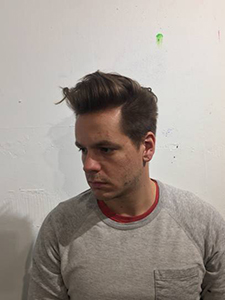 Andrew Jilka
Andrew Jilka
Andrew Jilka was born in in 1986 to a working-class home in Salina, Kansas. The son of a bus driver and a lunch lady, Jilka has been employed as a fast-food worker, a cigarette warehouse stocker, a furniture deliveryman, a Hewlett-Packard call-center representative, a bartender, and later an assistant to the artist Tom Sachs. After selling his Camaro, he enrolled at the University of Kansas in Lawrence, where he received a BFA in printmaking in 2009, as well as a scholarship to study printmaking at Hongik University in Seoul, Korea. Jilka’s work is greatly influenced by the instabilities and anxieties of his Midwestern upbringing. His painting is an attempt to reconcile the “high” of the history and lineage of contemporary painting with the Walmart culture he was raised in. Jilka approaches painting with both the deference of Brahms and the irreverence of the Ramones—and perhaps a touch of Taylor Swift. His work has been shown in group and solo exhibitions in Kansas City, Atlanta, New York, and Seoul. He is currently an MFA candidate at the School of Visual Arts in New York.
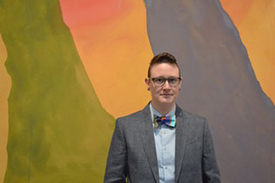 Lex Lancaster
Lex Lancaster
Lex Morgan Lancaster is a PhD candidate in the Department of Art History at the University of Wisconsin, Madison, where they will complete their degree in May 2017. Lancaster’s dissertation, “Dragging Away: Queer Abstraction in Contemporary Art,” investigates abstraction as a tactic of queering in the work of contemporary artists who deploy nonrepresentational form for political ends. Their related article, “Feeling the Grid: Lorna Simpson’s Concrete Abstraction,” was published in ASAP/Journal (2017), and “The Wipe: Sadie Benning’s Queer Abstraction” is forthcoming in Discourse: Journal for Theoretical Studies in Media and Culture. Lancaster is chairing the session on “New Materialisms in Contemporary Art” at CAA’s 2017 Annual Conference in New York.
Lancaster received their BA in art history from Case Western Reserve University in Cleveland, Ohio. They have assisted with exhibitions and public programs at the Cleveland Museum of Art as coordinator of teen programs and intern to the curator of contemporary art, and at the National Gallery of Art in Washington, DC, as a paid summer intern in the Department of Photographs. At the University of Wisconsin, Madison, Lancaster curated the exhibition Our House! Unsettling the Domestic, Queering the Spaces of Home at the Chazen Museum of Art.
CAA Local College Tour
posted by CAA — September 30, 2016
Students are crucial to CAA and the work we do. Support and interest from student members allows us to provide fellowships, professional development, mentorships, and job placement services to those very same students. In the coming months, CAA is visiting several local New York colleges and universities in order to connect with our youngest and one of our most vital constituencies. Below is our upcoming schedule. We hope to see you there.
Monday Oct. 10, 10AM-12PM at Parsons Fine Arts
Tuesday Nov. 1st at Pratt Institute (Time TBD)
Wednesday Nov. 2nd at Pratt Institute (Time TBD)
Friday Nov. 18th, 12PM-4PM at School of Visual Arts
Recipients of the 2015 Professional Development Fellowships
posted by Christopher Howard — January 22, 2016
CAA has awarded four 2015 Professional-Development Fellowships—two in the visual arts and two in art history—to graduate students in MFA and PhD programs across the United States. In addition, CAA has named two honorable mentions in art history and four in the visual arts. The fellows and honorable mentions also receive a complimentary one-year CAA membership and free registration for the 2016 Annual Conference in Washington, DC.
Receiving fellowships in the visual arts are:
- Delano Dunn, School of Visual Arts, $10,000
- Derrick Woods-Morrow, School of the Art Institute of Chicago, $4,000 (gift of the Milton and Sally Avery Arts Foundation)
The two recipients of the fellowship in art history are:
- Marin Sarvé-Tarr, University of Chicago, $10,000
- Emilie Boone, Northwestern University, $2,500 (gift of the Elizabeth A. Sackler Museum Educational Trust)
The honorable mentions for art history go to: Adrian Anagnost, University of Chicago; and Monica Bravo, Brown University. For the visual arts, honorable mentions are bestowed upon: Zhiwan Cheung, Carnegie Mellon University; Sarah Hewitt, Purchase College, State University of New York; Victoria Maidhof, San Francisco Art Institute; and Kaiya Rainbolt, San Diego State University.
DeWitt Godfrey, president of the CAA Board of Directors, will formally recognize the fellows and honorable mentions at the 104th Annual Conference during Convocation, taking place on Wednesday evening, February 3, 2016, at the Washington Marriott Wardman Park Hotel.
CAA’s fellowship program supports promising artists and art historians who are enrolled in MFA and PhD programs nationwide. Awards are intended to help them with various aspects of their work, whether for job-search expenses or purchasing materials for the studio. CAA believes a grant of this kind, without contingencies, can best facilitate the transition between graduate studies and professional careers. The program is open to all eligible graduate students in the visual arts and art history. Applications for the 2016 fellowship cycle will open in late spring.
Fellows in the Visual Arts
 Delano Dunn
Delano Dunn
Born in Los Angeles, California, Delano Dunn currently lives and works in New York. Through painting, mixed media, and collage, he explores questions of racial identity and perception through various contexts, ranging from the personal to the political and drawing from his experience growing up in South Central LA.
Dunn has had solo exhibitions in Los Angeles, New York, and Buffalo and is currently completing an MFA at the School of Visual Arts in New York. He holds a BFA from Pratt Institute in Brooklyn. Upcoming exhibitions include a solo show at the 2016 Affordable Art Fair and a group show at Artspace in New Haven, Connecticut. His work is also on view at the Delaware Center for the Contemporary Arts in Wilmington until March 4.
View images of Dunn’s work: Example 1, Example 2, Example 3.
 Derrick Woods-Morrow
Derrick Woods-Morrow
Derrick Woods-Morrow was born and raised in Greensboro, North Carolina. He is an MFA student in the Photography Department at the School of the Art Institute of Chicago (SAIC) in Illinois. He holds a BA from Randolph College in Lynchburg, Virginia, and earned a postbaccalaureate certificate from the Massachusetts College of Art and Design (MassArt) in Boston. Woods-Morrow’s work has been shown at the Kinsey Institute at Indiana University, Randolph’s Maier Museum of Art, the President’s Gallery at MassArt, the Sullivan Galleries at SAIC, and the ACRE residency, where he was a Terry Plumming Scholar. He has received the Carol Becker Merit Scholarship at SAIC.
Woods-Morrow’s work explores the problematic ideals of masculinity embedded in systems that constructs gay pornography, where intimacy is frail and domination and disregard are desired traits; where oppressive force is the norm; where the African American does not exist except as fetishized commodity; and where a prevailing use of heterosexual vocabulary continues to establish masculine credibility within queer imagery.
View images of Woods-Morrow’s work: Example 1, Example 2.
Fellows in Art History
 Marin Sarvé-Tarr
Marin Sarvé-Tarr
Marin Sarvé-Tarr will complete a PhD in art history at the University of Chicago in Illinois in summer 2016. Her dissertation, “Seizing the Everyday: Lettrist Film and the French Postwar Avant-Garde, 1946–1954,” examines the films produced by members of Lettrism, Nouveau Réalisme, and the Situationist International; it also identifies informal networks between later rivals forged in cafés and ciné-clubs in 1950s Paris. Her project shows how artists’ collaborative films and public demonstrations impacted the agendas of publishers, cinemas, and museums that patronized artists, molded public reception of the arts, and figured social progress in reconstruction France. With support from the Deutsches Forum für Kunstgeschichte, the Getty Research Institute, and the Georges Lurcy Charitable and Educational Trust, Marin presented on religion and the avant-garde at CAA’s 2014 Annual Conference. She is also publishing a chapter on Lettrist cinema in a forthcoming volume from the European Postwar and Contemporary Art Forum, to be published later this year.
Marin earned a BA in 2008 from Scripps College in Claremont, California, where she curated The Politics of Satire: La Caricature in Post-Revolutionary France at the Clark Humanities Museum. She contributed to exhibitions and programs at the Art Institute of Chicago, the Fondation Cartier pour l’art contemporain in Paris, and the Bophana Audiovisual Resource Center in Phnom Penh, Cambodia. Marin helped to organize Interiors and Exteriors: Avant-Garde Itineraries in Postwar France (2013–14) at the University of Chicago’s Smart Museum of Art. As a 2015–16 Andrew W. Mellon Curatorial Research Fellow for the Chicago Object Study Initiative at the Art Institute of Chicago, Marin is currently preparing object-based research and publications on Surrealism.
 Emilie Boone
Emilie Boone
Emilie Boone is currently a PhD candidate in the Department of Art History at Northwestern University in Evanston, Illinois. She focuses on the history of photography, the art of the African diaspora, and American art. Her dissertation, “Visions of Harlem: Reconsidering the Studio Photography of James Van Der Zee,” demonstrates the intrinsic role of Van Der Zee’s images in constructing multivalent narratives of Harlem. Boone has written for History of Photography and African Arts and for Columbia College Chicago’s Museum of Contemporary Photography and Washington University’s Mildred Lane Kemper Art Museum in Saint Louis, Missouri. Most recently, she has contributed to an exhibition catalogue, From Within and Without: The History of Haitian Photography, for the NSU Museum of Art Fort Lauderdale in Florida. She also has an essay in the forthcoming anthology, Towards an African-Canadian Art History: Art, Memory, and Resistance.
Boone’s honors include a fellowship at the Smithsonian Institute’s National Portrait Gallery, a Fulbright fellowship at the Notman Photographic Archives, a Terra Foundation Residency in Giverny, France, and an Eliza Dangler Curatorial Fellowship at the Art Institute of Chicago. In 2011, 2013, and 2015, she was an invited participant of the Ghetto Biennale in Port-au-Prince, Haiti. A critical-studies residency at the Center for Photography at Woodstock led to her recent role as a selection panelist for the Woodstock Artist-in-Residency Program for artists working in the photographic arts. As a postdoctoral Mellon curatorial fellow, Boone looks forward to advancing her research, teaching, and curatorial engagement at the Williams College Museum of Art in Williamstown, Massachusetts.
Honorable Mentions in Visual Art and Art History
Adrian Anagnost
Adrian Anagnost is a historian of modern and contemporary art whose scholarship investigates the intersections of urban space, political economy, and aesthetic practice. She earned a PhD from the University of Chicago in Illinois in December 2015. Her dissertation, titled “Contested Spaces: Art and Urbanism in Brazil, 1928–1969,” considers how the artists and architects Flávio de Carvalho, Lúcio Costa, Lina Bo Maria Bardi, Waldemar Cordeiro, Lygia Clark, and Hélio Oiticica engaged with the built environment as a concretization of social relations in Brazil.
Before coming to Chicago, Anagnost completed an MA in modern art from Columbia University in New York, with a thesis on the contemporary photographer James Welling. She also worked in the archive and registration departments of David Zwirner in New York. Anagnost’s writings on Waldemar Cordeiro, Carol Bove, Oswald de Andrade, and Pedro Almodóvar have appeared in the Chicago Art Journal, Hemisphere: Visual Cultures of the Americas, and ArtUS. Her upcoming publications include an article on the Polish Constructivist Teresa Żarnower for the Woman’s Art Journal and an essay on the work of the contemporary artist Theaster Gates.
 Monica Bravo
Monica Bravo
Monica Bravo is an ABD doctoral candidate specializing in American art in a global context and the history of photography at Brown University in Providence, Rhode Island. She received her BA in studio art from Dartmouth College in Hanover, New Hampshire, in 2004, and an MA in art history and criticism from Stony Brook University in Stony Brook, New York, in 2009. Bravo’s dissertation examines exchanges between modernist photographers in the United States and modern Mexican artists working in painting, poetry, music, and photography, resulting in the development of a greater American modernism in the interwar period.
Bravo has been a fellow at the University of Arizona’s Center for Creative Photography, the Huntington Library, Art Collections, and Botanical Gardens in San Marino, California, and the Georgia O’Keeffe Museum Research Center in Santa Fe, New Mexico. She is currently a Wyeth predoctoral fellow at the National Gallery of Art’s Center for Advanced Study in the Visual Arts in Washington, DC.
 Zhiwan Cheung
Zhiwan Cheung
They say that geography defines a person. Born in America and raised by Chinese immigrants, Zhiwan Cheung lives in a sort of permanent in-between state of being neither fully American nor Chinese. As a journey toward a home that does not exist, a rite of passage with no destination, he uses his work to search for a critical understanding of an impossible homecoming. Cheung’s practice focuses on the meaning and space between identities, examining the feeling of a liminal displacement through sculpture, film, and performance. In approaching this journey, he probes the intersection of national identity and the personal psyche with an open-ended, multimedia approach.
Performativity gets closer to the heart of all identity. It is no coincidence that many great actors continue to employ their characters long after the camera stopped running. For the best performances, the blurring between fake and real becomes so powerful that we cease to see the actor or the character: one is constantly subsumed by the other, leaving the residue of the actual and the imaginary to shift and ebb between various in-between-states. This sacrificing of the self and the fabrication of a persona speak to the destruction of the self for art. Or is it perhaps the other way around? James Luna, a Native American performance artist, once said, “How do you talk about things like intercultural identity[?] Do you talk about it in third person? If you sacrifice yourself, so to speak, then it becomes much more dynamic.” The sacrificing of the true self and the fabricated persona speaks to the destruction of the soul for art, or perhaps it is the other way around. Life is art. Art is life.
The intersection of national identity and the personal psyche is complex, not always clear nor fixed. As an artist, Cheung probes the paths and how and where they join and diverge. This personal odyssey explores the permanent liminal through diverse strategies and processes. It is a journey guided by an allusive visual language, with a mix of pop-cultural, art-historical, and aesthetic choices that also guide audiences into finding their own rites of passage.
View images of Cheung’s work: Example 1, Example 2, Example 3.
 Sarah Hewitt
Sarah Hewitt
She vows
To make plastic art
Redefine plastic art
To make you love plastic art
To challenge and bewitch you with what you think is formal or plastic
To make you bow to her craft\
Redefine craft
To weave
To weave your mind
To weave your mind into confusion
To drag you into the sacred without your consent
Let the work be deep, dark, and dirty—gritty. It comes from a place of authenticity. Sarah Hewitt is not looking to create a spectacle for fun or frivolity. This is serious business for her. She is crafting a new fabric in a manner that is complicated—as complicated and fragile as our contemporary moments.
Hewitt’s works are exhibited around the country and have garnered many awards, grants, and residencies, including the Skowhegan School of Painting and Sculpture and a fellowship at the Vermont Studio Center. This spring she will receive her MFA in visual art from Purchase College, State University of New York.
View images of Hewitt’s work: Example 1, Example 2, Example 3.
 Victoria Maidhof
Victoria Maidhof
Victoria Maidhof has been fascinated by unconventional people for as long as she can remember. She was raised in a middle-class suburban neighborhood where her family stood out as eccentrics. They were the only secular family on the block, and her parents encouraged their children to run wild, play hard, and reject authority. Maidhof’s father told captivating stories about his unusual upbringing, many of which revolved around his mother, a paranoid schizophrenic, and his father, a merchant marine with severe posttraumatic stress disorder.
As Maidhof got older, she became curious about other people that lived unorthodox lifestyles. Having seen the work of Mary Ellen Mark and Diane Arbus, she knew that the camera could grant permission into the lives of complete strangers. In 2003, Maidhof moved to San Francisco to study photography at the San Francisco Art Institute in California. After completing her BFA, she returned to her home town, San Diego, with her now-husband Tahan in tow. They currently reside in La Mesa, where she works full time as a photographer. Maidhof is finishing her MFA through the San Francisco Art Institute’s low-residency program.
View images of Maidhof’s work: Example 1, Example 2, Example 3.
 Kaiya Rainbolt
Kaiya Rainbolt
Kaiya Rainbolt earned her BA in English literature at Earlham College in Richmond, Indiana, and studied studio art at City College of San Francisco in California, with a focus in metalwork. She currently attends the MFA program in jewelry and metalwork at San Diego State University. Rainbolt has participated in several national juried exhibitions and has been recognized with numerous scholarships and awards.
Though trained as a metalsmith, Rainbolt currently uses a wide variety of materials in her work, including fabrics, clothing, steel, lead, and animal hide. She is focused on creating work that has the potential to elicit a visceral response from the viewer in order to promote engagement in a way that makes it easier to participate in dialogue about socially sensitive issues. Rainbolt believes that an art object, as a representation of a particular human struggle, has the potential to span differences in experience, background, and culture in a way that creates connection, generates empathy, and fosters understanding.
Institute of Fine Arts Publishes Report on Trends in Graduate Education
posted by Christopher Howard — March 24, 2015
 Patricia Rubin is Judy and Michael Steinhardt Director of the Institute of Fine Arts at New York University.
Patricia Rubin is Judy and Michael Steinhardt Director of the Institute of Fine Arts at New York University.
In 2010, thanks to a grant from the Andrew W. Mellon Foundation, the Institute of Fine Art at New York University inaugurated the Mellon Research Initiative. The initiative’s aim was to investigate trends in graduate education and advanced research in art history, archaeology, and conservation. That investigation took place at a time when those fields faced considerable challenges—financial, institutional, and conceptual. Cutbacks in funding from all sources and the concomitant or resulting instrumentalization of university education, which favors economic rationales for degree structures, department sizes, and disciplinary evaluation, presented explicit challenges to the humanistic as opposed to the “hard” sciences. They continue to do so.
The resulting publication, Pathways to the Future: Trends in Graduate Education, was introduced and discussed during three panels at CAA’s Annual Conference in February under the rubric of “Field/Work: Object and Site.” The Pathways report is the result of four years of consultation, undertaken through a series of workshops, conferences, and committees in which our fieldworkers—graduate students, professors, publishers, and university administrators, among others—were asked about the directions being taken in art history, archaeology, and conservation. These participants considered the resources those fields require to support graduate training and research; how those resources are most meaningfully allocated; and, crucially, how learning is best delivered in curriculum and training programs.
The public workshops and conferences (now available on the institute’s video archive) were accompanied by the work of three committees convened to pose relevant questions and investigate different aspects of our practices as researchers and educators. Unified in aim, the review committees largely operated independently. They shaped their work according to concerns and protocols specific to each field. The form of their reporting varies accordingly. All three committees considered both present conditions and future possibilities.
The examination of the state of our subjects found them to be generally robust. If anything they are stronger than ever before, existing as they do in today’s image-based environment and able to promote critical seeing along with critical thinking. They are inherently interdisciplinary and equally international or global in their inquiry and potential impact. They have direct relation to material understanding, in the recovery and safeguarding of our physical heritage, in interpreting its present condition, and in forecasting future manifestations.
Although based on wide consultation and meticulous deliberation, this report is intended to contribute to vital and ongoing conversations about the disciplines of art history, archaeology, and conservation, about their professional and intellectual situation, and about strengths, weaknesses, and strategies. Their thoughts on those matters are contained in this document, which is available on the institute’s website for downloading and circulating. The institute hopes this document generates discussion and stimulates further thoughts on the topics it raises and regarding training and research in art history, archaeology, and conservation.
The institute is profoundly grateful to the Mellon Foundation for its generous sponsorship, and to all those who participated in the initiative.
CAA Update from the President
posted by DeWitt Godfrey — November 13, 2014
DeWitt Godfrey, professor of art and art history at Colgate University in Hamilton, New York, is president of the CAA Board of Directors.
CAA is moving ahead on several strategic goals. After a year of investigation and discussion with over 200 artists, art historians, curators, editors and reproduction rights officers, Professors Patricia Aufderheide and Peter Jaszi are drafting the new Code of Best Practices in Fair Use in the Visual Arts which will be reviewed by the Task Force on Fair Use, the Committee on Intellectual Property, the Professional Practices Committee, and an independent Legal Advisory Committee. We anticipate that the code will be presented at the Annual Conference in February 2015.
At the October 26th Board meeting, the formation of two task forces was approved: one to review CAA’s governance structure, and one to review its professional committees. As a greater number of faculty are now part-time, the board and committee requirements have to be adjusted so that the best expertise is brought to CAA within the most economical timeframes. The Board also had a lively discussion on the best directions to be taken regarding advocacy and how CAA can respond quickly and efficiently to issues that affect members’ daily work. We are exploring the creation of a task force on advocacy.
The CAA Board and senior staff held a day-long retreat which focused on a vision for the future of the annual conference—a more flexible structure, greater opportunities for interdisciplinary discussion, serving the needs and interests at each stage of a career in the visual arts, and the ability to quickly address issues that arise in the field, have an international perspective and participation, and reach those members who are not able to attend the conferences.
New, updated volumes of the Directories of Graduate Programs are now available through CAA’s website. From the data published in the directories, CAA will draw statistical information about all the visual-arts subdisciplines, mapping important changes in the field regarding enrollment and employment. We plan to make information from the past four years available to members in the coming months.
The September issue of The Art Bulletin features the third essay in the “Whither Art History?” series, as well as essays on Jan van Eyck and commemorative art, Hans Burgkmair and recognition, Watteau and reverie, and contemporary Indian Art from the 1985-86 Festival of India. The latest issue of Art Journal includes a forum called “Red Conceptualismos del Sur/Southern Conceptualisms Network,” featuring articles printed in their original Spanish and Portuguese alongside new English translations—this is the first foray into multilingual publishing for CAA. Art Journal Open’s first web editor, Gloria Sutton, associate professor at Northeastern University, has commissioned features from the artist Karen Schiff and the new-media historian Mike Maizels, as well as a dialogue between the curator Becky Huff Hunter and the artist Tamarin Norwood. The vision for this website is to provide an online space for artists’ works, experimental scholarship, and conversations among arts practitioners. And caa.reviews, now open access, includes nearly 2,500 reviews of books, exhibition catalogues, and conferences on art, as well as an annual list of completed and in-progress art history dissertations. Thirty-four field editors commission reviewers to address new publications, exhibitions, and exhibition catalogues and videos in every area of the visual arts. The new copublishing relationship between CAA and Taylor & Francis that supports all three CAA journals will complete its first year this month with a marked increase in readership. We are encouraging authors to use the multimedia resources offered at Taylor & Francis Online as well as its citation app.
The Andrew W. Mellon Foundation has awarded CAA and the Society for Architectural Historians a grant to cooperatively carry out research and develop guidelines in digital art and architectural history for promotion and tenure in the workforce. With the increased use of digital platforms in research and publishing there is a need for guidelines that reflect the best practice in evaluating digital art and architectural history. A task force will be formed of two art historians, two architectural historians, a librarian, a museum curator, a scholar from another humanities or social science field with expertise in digital scholarship, and a graduate student or emerging professional in art history or architectural history. CAA will hire a part-time researcher to gather information on current practices from faculty members throughout the country. Please see the Online Career Center for the listing.
CAA, like other learned, membership societies, faces significant challenges and opportunities for the future. The changing landscape of publication, academic workforce issues, advocating for the arts and humanities, serving a changing membership and the field are areas where CAA has and will continue to make a difference, by building on our legacy of leadership and embracing the necessary changes required to meet our mission and vision.
2014 Editions of CAA’s Directories of Graduate Programs
posted by Betty Leigh Hutcheson — October 24, 2014

CAA’s 2014 editions of Graduate Programs in the Visual Arts and Graduate Programs in Art History are comprehensive resources that feature updated information about 630 programs in 400 schools in the United States, Canada, the United Kingdom, Europe, and beyond (see sample entries).
The directories provide prospective graduate students with the information they need to begin the application process. The directories are also key professional references for career-services representatives, department chairs, graduate and undergraduate advisors, librarians, professional-practices educators, and professors interested in helping emerging generations of artists and scholars find success.
Entries from the following program types are available: History of Art and Architecture; Studio Art and Design; Curatorial and Museum Studies; Arts Administration; Art Education; Library Science; Film Production; and Conservation and Historic Preservation.
New this year, CAA is offering PDF files of individual programs (updated in 2014) free of charge with the option of free customized PDF files, created on demand, based on the user’s preferred search criteria. Anyone can search the directories online by program type, faculty specialization, awarded degrees, country, region, state, availability of health insurance, and whether or not part-time students are admitted, or browse the directories by institution and download individual institutional records as PDF files. Search results include the program type, its location, and the program name and description, while the PDF file gives an in-depth profile of each program.
Print volumes offer several delivery options; e-books (as PDF or ePub files) can be downloaded twice and are compatible with your personal computer and most smart phones and ereaders (excluding Kindles). Please note that the individual, program-specific print volumes were last updated in 2013 and are available at a discounted rate.
Individuals can order through CAA’s website. If you are ordering for a school, institution, or department within a college or university, please download the order form and return the completed version with payment to Roberta Lawson, CAA office coordinator. We are unable to process Institutional orders online. Your order will be processed within three to five business days.
For more details, visit the CAA website. For questions about purchasing, please contact Roberta Lawson, CAA office coordinator, at 212-392-4404.



